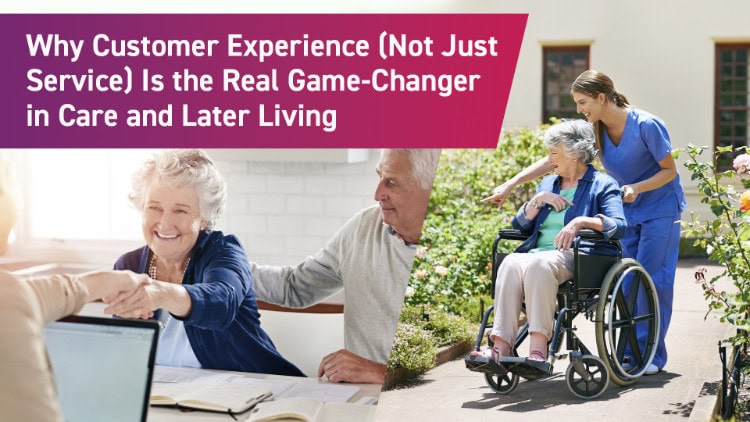The later-living sector plays an essential role in supporting older adults, offering companionship, peace of mind, and quality care to both residents and their families. However, public perception of these communities can often be shaped by outdated stereotypes or negative media portrayals.
A more positive image is essential for building trust and ensuring that families feel reassured about their choices. By promoting the benefits and addressing common concerns, we can reshape the conversation around later living.
Highlighting the Benefits of Later Living
The narrative around later-living communities should focus on the positives, such as the vibrant lifestyles and improved well-being that residents can enjoy. Additionally, Inspired Villages has found that residents who engage in their wellness programmes reduce their biological age by an average of 8.8 years. This research shows that later-living communities are not just about maintaining quality of life but actively enhancing it, with clear benefits for both physical and mental health.
By highlighting these positive outcomes, we can help shift public perception away from focusing solely on any negatives and instead showcase the true benefits of living in such communities.
Practical Tips to Improve the Sector’s Image
Changing the image of later living requires practical steps and compelling storytelling. Here are key strategies to promote a more positive view of the sector:
- Share Success Stories and Events with the Press
An excellent way to enhance the reputation of later-living communities is by sharing real-life success stories, activities, and events that highlight how they’ve enriched residents’ lives, through local press coverage. These stories provide a window into the positive impact the community has on the wellbeing of its residents, showcasing everything from meaningful social events to personal achievements.
- Share Customer Testimonials
Sharing testimonials is one of the most powerful ways to build trust and credibility in the care sector. Real stories from residents and their families can offer reassurance, painting an authentic picture of the care experience. When potential clients read about others’ positive experiences, it helps them feel more confident in their decision-making. Whether it’s highlighting the warmth of the staff, the quality of care, or how a loved one’s wellbeing has improved, testimonials bring your care home’s values to life. It’s not just about what you say – it’s about what others are saying about you.
- Encourage Family Involvement
Inviting families to take part in the life of the community fosters trust. Open days or family events not only allow them to see the quality of care for themselves but also help them feel part of the wider community. Studies show that families who feel engaged and reassured are more likely to have a positive view of their loved one’s new home.
- Improve Online Presence
With many families beginning their search online, having a welcoming and informative website is crucial. Make sure your website highlights the community’s strengths, provides clear and transparent information, and offers virtual tours and testimonials. With 70% of families accessing information on mobile devices, it’s also important to have a mobile-friendly site.
- Engage with Social Media
Social media can be an incredibly powerful tool for showcasing the positive aspects of life in later-living communities. Regularly sharing updates about resident activities and profiling staff members helps humanise the community, showing it as vibrant and caring. Engaging with potential residents and their families online allows for a more personal and approachable connection.
- Offer Transparency
60% of families say they are more likely to choose a care home that offers transparent communication. A perceived lack of transparency is one of the main barriers to trust in this sector. Be upfront about costs, services, and care plans from the beginning. Providing clear and detailed information helps reduce anxiety and positions the community as trustworthy and dependable.
- Foster a Sense of Independence
Many potential residents fear losing their independence when moving into a later-living community. However, 74% of residents feel they have more freedom and independence because they no longer need to manage household tasks. Emphasising how your community supports independence – through flexible schedules, personalised activities, or helping residents maintain hobbies – can help residents thrive.
- Encouraging Visits
One of the most effective ways to help people understand the lifestyle in later-living communities is by encouraging them to visit. Nothing compares to experiencing the environment in person. Offering guided tours, either virtual or in person, allows families to meet staff, see the amenities, and understand the community’s warmth and vibrancy.
Focus on Staff and Relationships
A key aspect of improving the image of later-living communities is highlighting the strong relationships between staff and residents. Nearly 39% of people choose a community based on the quality of staff and their interactions with residents.
Showcasing the dedication, warmth, and expertise of your team is essential in demonstrating that later-living communities aren’t just about care – they are about fostering meaningful relationships that enrich residents’ lives.
Regularly featuring staff profiles on your website or social media helps families feel connected to the people caring for their loved ones. This personal touch humanises the community and reassures families that their relatives are in good hands.
Final Thoughts
The later-living sector has an opportunity to transform its public image by focusing on the positive experiences of residents and addressing common concerns with transparency and empathy. Through personalised care, vibrant communities, and a commitment to independence and well-being, later-living communities can dispel outdated stereotypes and be seen for what they truly offer.
By taking active steps to improve communication, share success stories, and encourage visits, we can create a more positive image of later-living – one that reflects the compassion, care, and quality of life that these communities provide.
If you’re ready to showcase the true benefits of your later-living community and shift the narrative to focus on vibrant communities and enhanced well-being, we’re here to help.


